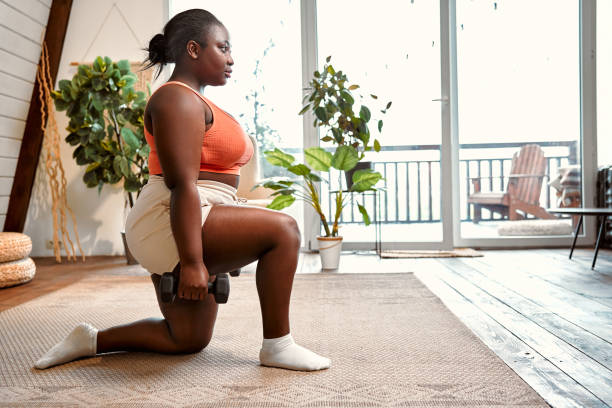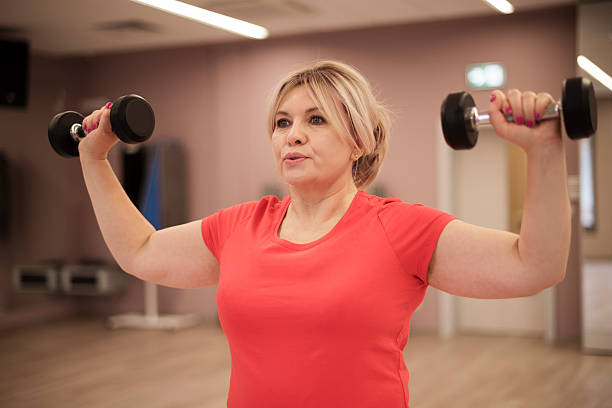Discover the essentials of women’s strength training. Learn how to start safely, build muscle, boost confidence, and improve overall health with this beginner’s guide.
Introduction
Strength training has become one of the most empowering and health-enhancing fitness practices for women. Once considered a male-dominated domain, more women are now embracing resistance workouts to improve their physical and mental health. Far from creating bulky physiques, strength training helps women build lean muscle, boost metabolism, enhance bone density, and improve overall well-being.
For beginners, however, stepping into strength training can feel intimidating. The good news is that women at any age or fitness level can start safely, progress gradually, and achieve incredible results. This guide provides a comprehensive overview of the benefits, beginner-friendly exercises, safety tips, and strategies to help women feel confident in their strength journey.
Why Strength Training Matters for Women
Strength training is more than just lifting weights; it is a long-term investment in women’s health. Some key benefits include:
-
Improved metabolism: Muscle tissue burns more calories at rest, making weight management easier.
-
Bone health: Resistance exercises improve bone density, reducing the risk of osteoporosis.
-
Hormonal balance: Regular strength workouts can support better insulin sensitivity and reduce hormonal fluctuations.
-
Mental well-being: Exercise releases endorphins, boosting mood and reducing anxiety or depression.
-
Injury prevention: Strong muscles and joints lower the risk of falls or strains.
These benefits make strength training essential, especially for women juggling busy schedules, pregnancies, or age-related health concerns.
Common Fears and Misconceptions
Many women hesitate to begin strength training due to myths. Let’s address some of the most common:
-
“Lifting weights will make me bulky”: Women naturally have lower testosterone, making bulky muscles unlikely.
-
“Strength training is only for young women”: Women of all ages can train safely with modifications.
-
“Cardio is better for fat loss”: A combination of cardio and strength training is most effective.
-
“It’s unsafe for beginners”: With proper guidance and gradual progression, strength training is safe.
Beginner-Friendly Strength Training Exercises
When starting, it’s important to focus on compound movements that engage multiple muscles. Here are key exercises:
1. Squats

-
Benefits: Strengthens legs, glutes, and core.
-
Tips: Keep knees behind toes and back straight.
-
Modifications: Use a chair for support if new.
2. Lunges

-
Benefits: Improves balance and tones thighs and glutes.
-
Tips: Take controlled steps and avoid overextending.
-
Caution: Women with knee problems should start with partial lunges.
3. Push-Ups

-
Benefits: Builds upper-body strength in arms, chest, and shoulders.
-
Modifications: Start with knee push-ups or wall push-ups.
4. Deadlifts

-
Benefits: Targets hamstrings, glutes, and lower back.
-
Tips: Keep weights close to the body and hinge at the hips.
-
Caution: Incorrect posture can strain the lower back, so beginners should start light.
5. Planks

-
Benefits: Strengthens core and stabilizes posture.
-
Variations: Side planks for oblique activation.
6. Glute Bridges

-
Benefits: Activates glutes and improves hip strength.
-
Modifications: Add resistance bands for progression.
7. Shoulder Press (Dumbbells)

-
Benefits: Strengthens shoulders and arms.
-
Tips: Use light dumbbells and progress gradually.
8. Rows (Dumbbells or Resistance Bands)

-
Benefits: Builds back strength and posture support.
-
Modifications: Bands are gentler for beginners.
Safety Tips for Beginners
-
Warm up before starting with 5–10 minutes of light cardio.
-
Focus on proper form over heavy weights.
-
Progress gradually by increasing weight or reps.
-
Rest at least 48 hours before working the same muscle group.
-
Listen to your body and stop if you feel pain beyond mild soreness.
Tips for Staying Motivated and Safe
- Track your workouts and progress
- Gradually increase weights and repetitions
- Listen to your body and avoid overexertion
- Find a workout buddy or join a class
- Celebrate small victories
Creating a Beginner’s Strength Training Routine
A balanced weekly plan might look like this:
-
Day 1: Full-body workout (squats, push-ups, rows, planks).
-
Day 2: Rest or light cardio.
-
Day 3: Lower-body focus (lunges, deadlifts, glute bridges).
-
Day 4: Rest or yoga.
-
Day 5: Upper-body focus (shoulder press, rows, push-ups).
-
Day 6: Active recovery (walking, stretching).
-
Day 7: Rest.
Getting Started: Essential Tips for Beginners
- Consult a Healthcare Professional: Ensure you’re ready to begin, especially if you have medical conditions.
- Set Realistic Goals: Focus on strength, endurance, or overall fitness—tailor your goals accordingly.
- Start Slow and Use Proper Form: Begin with light weights or bodyweight exercises to learn correct technique.
- Incorporate Rest Days: Allow muscles to recover and prevent injury.
- Focus on Full-Body Workouts: Engage multiple muscle groups for balanced strength.
Nutrition and Recovery for Strength Training
Strength training works best when supported with proper nutrition and rest.
-
Protein intake: Essential for muscle repair and growth.
-
Hydration: Keeps muscles and joints functioning well.
-
Balanced meals: Include whole grains, lean proteins, healthy fats, and vegetables.
-
Sleep: Aim for 7–9 hours to optimize recovery and results.
Special Considerations for Women
-
Pregnancy and postpartum: Always consult a healthcare professional before training.
-
Menopause: Strength training is highly beneficial for bone density and weight management.
-
Chronic conditions: Women with arthritis, back pain, or PCOS should adjust routines under guidance.
Frequently Asked Questions (FAQ)
1. How many times a week should women strength train?
Beginners should aim for 2–3 sessions per week, gradually increasing as endurance builds.
2. Can strength training replace cardio?
No, both complement each other. Cardio supports heart health, while strength builds muscle and metabolism.
3. How long before I see results?
Visible results often appear after 6–8 weeks with consistent training and balanced nutrition.
4. Is gym equipment necessary?
No, many beginner routines can be done at home using body weight or resistance bands.
5. Should women lift heavy weights?
Yes, eventually. Starting light is wise, but lifting progressively heavier weights builds strength and muscle tone effectively.
Conclusion
Strength training is one of the most powerful tools for improving women’s health, confidence, and longevity. By starting with basic exercises, focusing on form, and progressing gradually, women can enjoy improved strength, bone health, and emotional well-being. Whether done at home or in the gym, strength training is a lifelong investment in self-care and resilience.


Pingback: Early Signs of Osteoporosis: What Women Need to Know
Pingback: Strength Training Mistakes Women Should Avoid